中心性肥満の指標が乾癬のリスクと関連
乾癬全体の多遺伝子リスクスコアとウエスト/ヒップ比との間に乾癬リスクに関する有意な交互作用
英キングス・カレッジ・ロンドンのRavi Ramessur氏らは、乾癬患者9,305人を含む白人(イギリス系)のUKバイオバンクの参加者33万6,806人のデータを解析し、乾癬と関連する肥満パターンを特徴付け、定量化した。25種類の肥満の指標を評価した。乾癬の最大リスクをもたらす指標が、どのように疾患の遺伝的決定要因と関連するか検討するため、肥満の指標と乾癬の多遺伝子リスクスコア(PRS)との間で交互作用テストを行った。
解析の結果、ウエスト/ヒップ比、腹部脂肪比率、総腹部脂肪組織指数、ウエスト周囲径といった中心性肥満の指標は、乾癬との関連で最も効果量が大きかった5つの指標のうちの4つであった。肥満の指標のうち、体脂肪率は最大の効果量で乾癬と関連した。女性では、中心性肥満と乾癬との関連性が特に顕著であった。乾癬のリスクに関して、乾癬全体のPRSとウエスト/ヒップ比との間に有意な交互作用が見られた。PRSからHLA-C*06:02を除外すると、交互作用の効果は有意でなくなった。ウエスト/ヒップ比は乾癬と関連し、HLA-C*06:02陰性の人の方がHLA-C*06:02陽性の人より効果量が大きかった。
Ramessur氏は、「乾癬のリスクに関しては、体のどこに脂肪が蓄積されているかが重要であることが示唆された。特に胴回りの中心部の脂肪は、重要な役割を果たしていると思われる。このことは、乾癬を発症しやすい人、重症化しやすい人をどのように特定するのか、予防戦略や治療戦略にどのように取り組むかにおいて重要な意味を持つ」と述べている。
なお複数の著者が、バイオ製薬企業との利益相反(COI)に関する情報を明らかにしている。
Journal of Investigative Dermatology
Journal of Investigative Dermatology Editorial


Central Adiposity Measures Associated With Psoriasis Risk
Significant interaction seen for full psoriasis polygenic risk score with waist-to-hip ratio on psoriasis risk
TUESDAY, June 3, 2025 (HealthDay News) -- Central adiposity measures are strongly associated with psoriasis risk, with a stronger association in women, according to a research letter published online May 27 in the Journal of Investigative Dermatology.
Ravi Ramessur, B.M.B.Sc., from King's College London, and colleagues analyzed data from 336,806 participants in the U.K. Biobank of White British ancestry, including 9,305 with psoriasis, to describe and quantify patterns of adiposity associated with psoriasis. Twenty-five adiposity measures were assessed. To examine how measures conferring the greatest risk for psoriasis relate to genetic determinants of disease, interaction testing was conducted between adiposity measures and psoriasis polygenic risk scores (PRSs).
The researchers found that central adiposity measures, including waist-to-hip ratio, abdominal fat ratio, total abdominal adipose tissue index, and waist circumference were four of the five measures with the largest effect size for association with psoriasis. Of the total adiposity measures, percentage body fat was associated with psoriasis with the largest effect size. In women, the relationship between central adiposity and psoriasis was particularly pronounced. There was a significant interaction between the full psoriasis PRS and waist-to-hip ratio on psoriasis risk. When HLA-C*06:02 was excluded from the PRS, the interaction effect was no longer significant. Waist-to-hip ratio was associated with psoriasis, with a larger effect size in HLA-C*06:02-negative versus HLA-C*06:02-positive individuals.
"Our research shows that where fat is stored in the body matters when it comes to psoriasis risk," Ramessur said in a statement. "Central fat -- especially around the waist -- seems to play a key role. This has important implications for how we identify individuals who may be more likely to develop psoriasis or experience more severe disease, and how we approach prevention and treatment strategies."
Several authors disclosed ties to the biopharmaceutical industry.
Journal of Investigative Dermatology
Journal of Investigative Dermatology Editorial


